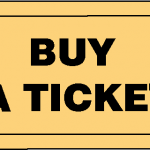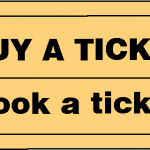Plan a visit to the Museum of Papermaking
Opening hours
Nov. – Apr:
Tues. – Sun. 9:00-15:00
May – August:
Mon.-Sat. 9am-6pm, Sun. 9:00-16:00
September – October:
Mon.-Sat. 9am – 5pm, Sun. 9:00-16:00
During the winter holidays the museum is open:
Mon.-Sat. 9:00-18:00
Sundays 9:00-16:00
The museum is closed on the following days
Mondays – from November to April (except winter holidays)
New Year’s Day – 1 January
Epiphany – 6 January
Easter – 1st and 2nd holiday
Corpus Christi
All Saints’ Day – 1 November
Independence Day – 11 November
Christmas – 25 and 26 December
Important
You should reserve approximately 1.5 hours for a tour of the entire museum.
The start of the tour is possible at the latest 1.5 hours before closing.
If visitors arrive later than this time, only part of the tour will be available to them. Insufficient time allocated by visitors to the exhibition does not constitute grounds for complaint.
Instructions for visitors
When moving around inside the paper mill, kindly take care in the passages between the rooms. Please pay attention to low door frames, steep stairs and non-standard steps.
The paper mill buildings in Duszniki-Zdrój were built from the 16th to the 18th century. Consequently, many of the architectural solutions used here do not comply with current building regulations for new buildings. For this reason, there are potential dangers in some places of the routes.
Terms and conditions of visiting the Papermaking Museum
please select option:
Individual tours
How to visit
A visit to the museum includes a guided/audio-guided tour along Tour I of Paper Through Two Millennia and an independent tour along Tour II of Art and Money, i.e. the current temporary exhibitions (including the Paper Art Gallery), the polychrome rooms and the exhibition Polish Paper Money.
How to use the audio guide
Each visitor may use an audio guide, the hire of which is free of charge.
Audio guides are available in Polish, Czech, English, German and Ukrainian. In the Polish version, it is also possible to select the so-called family trail, designed with children in mind.
The audio guide is available as an MP3 file for your phone or tablet:
Paper-making workshops
For an additional fee, you can take part in paper handicraft workshops, which take place at full hours on museum working days. Tickets can be purchased on weekdays at the ticket office, and at the weekend it is also possible to purchase online. The last classes start one hour before closing.
Workshop participants make sheets of various shapes, with floral elements, using a technique developed in medieval Italy. They keep the sheets they have created with their own hands as a souvenir of their visit to the museum.
Maximum number of participants: 7 / 1 h
Age group: 5+
Group visits (min. 10 persons)
Museum exhibitions
Please allow at least 2 hours for a tour of the entire museum.
The start of the visit is possible at the latest 2 hours before closing. If visitors arrive later than this time, only tour I (see below for details) will be available. Insufficient time allocated by visitors to the exhibition does not constitute grounds for complaint.
How to visit
A visit to the museum includes a guided/audio-guided tour of Route I With Paper Through Two Millennia and an independent tour of Route II Art and Money, i.e. the current temporary exhibitions (including the Paper Art Gallery), the polychrome rooms and the exhibition Polish Paper Money.
Museum lessons
- include a visit to the basic route on the history of paper and papermaking called With Paper Through Two Millennia and practical activities,
- are intended for groups only,
- they are conducted from Monday to Friday.
The hands-on activities are an excellent complement to the history, art and technology curriculum, facilitating the participants’ contact with the museum exhibit by teaching them to discover its diverse contents. The practical part of the lessons facilitates the acquisition of new knowledge and skills, while the works produced by the participants make an interesting souvenir of their visit to the paper mill.





